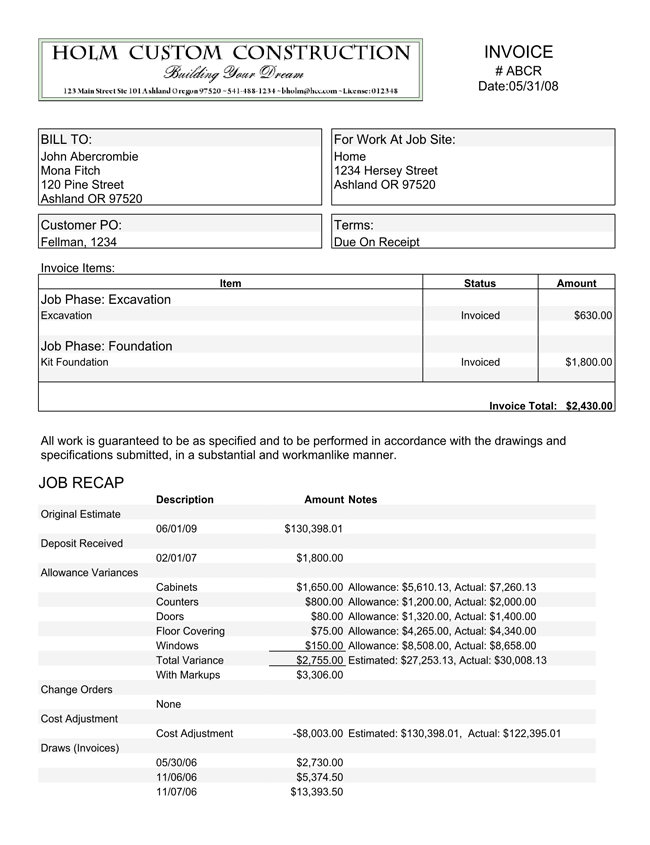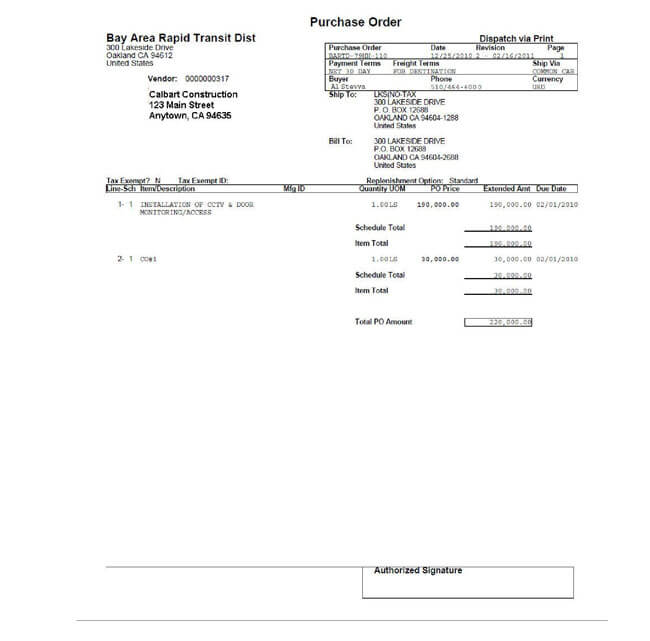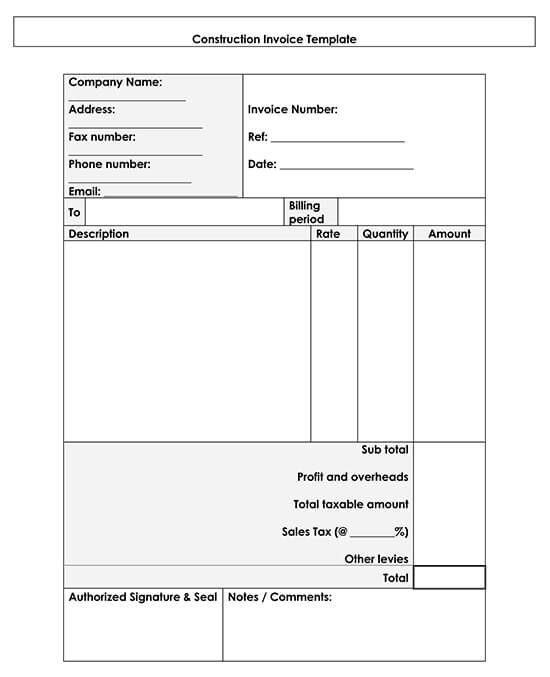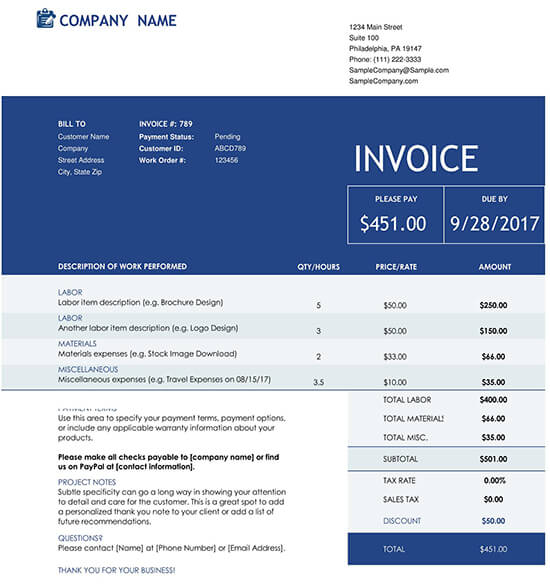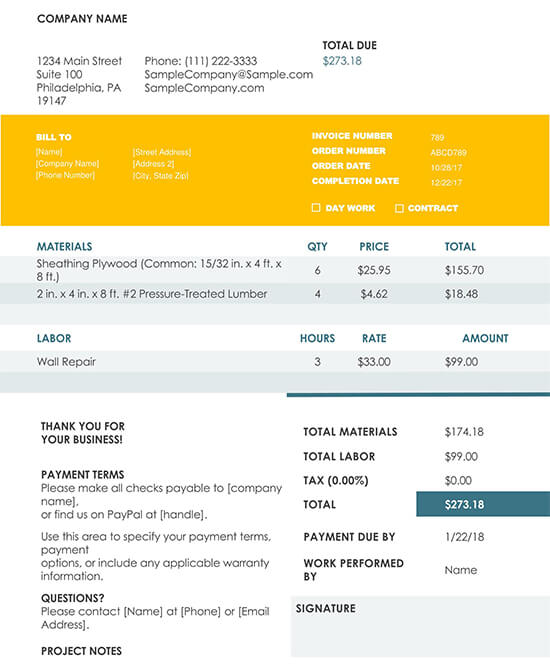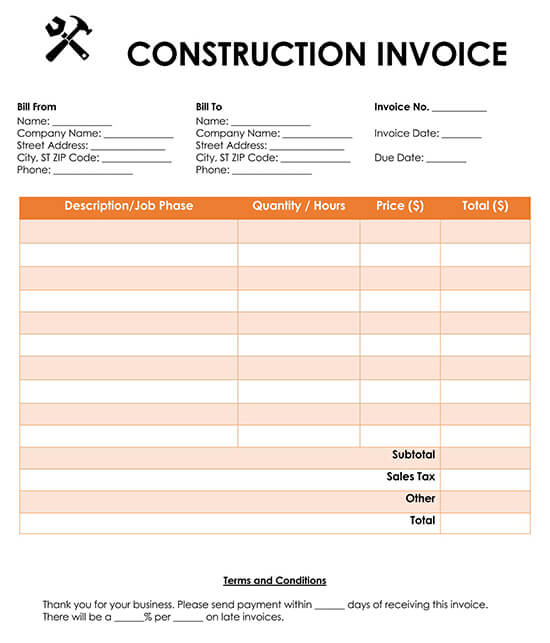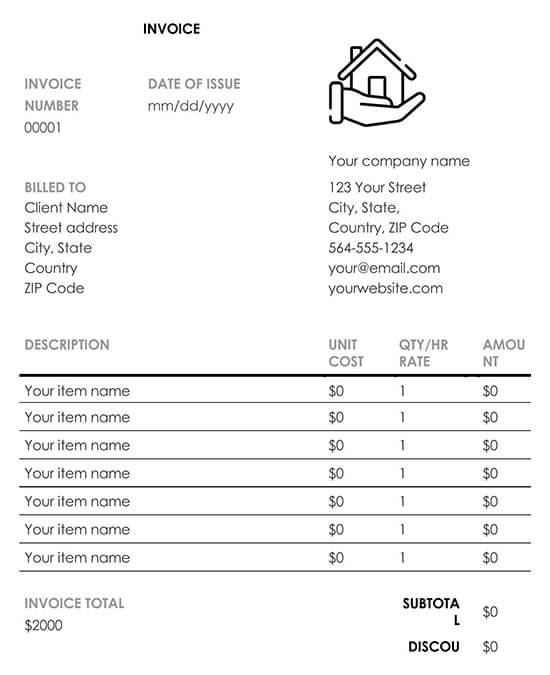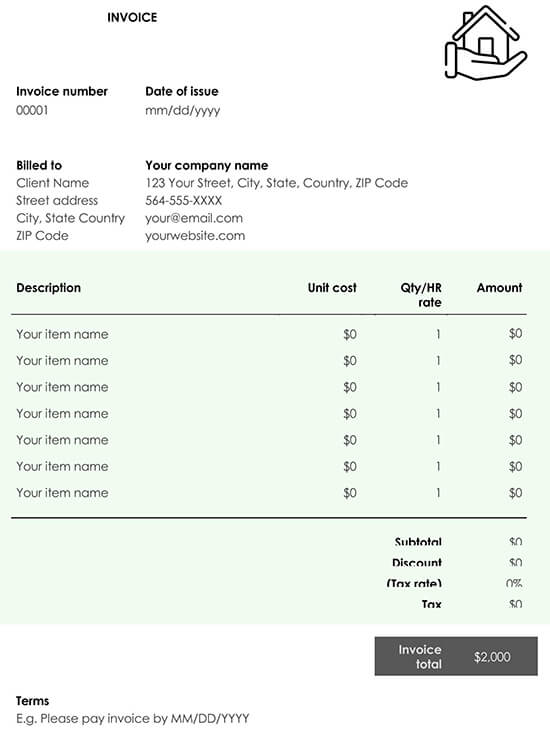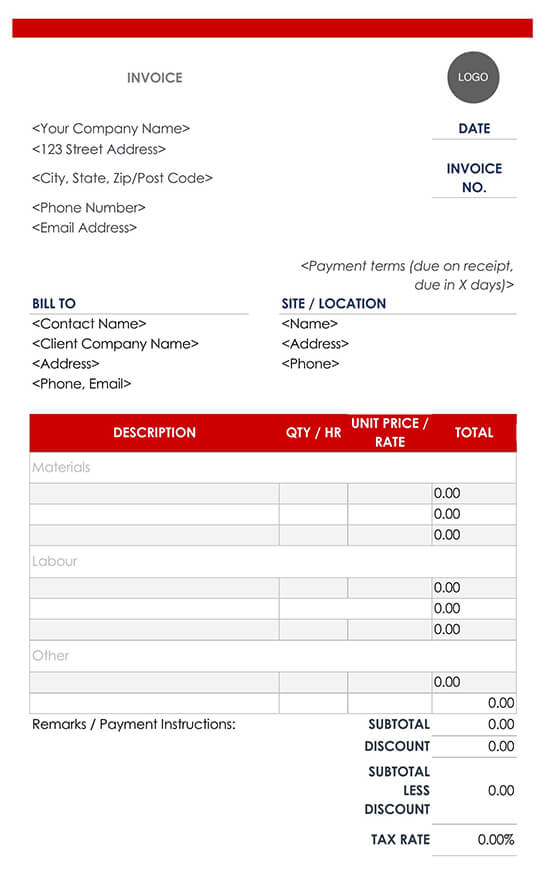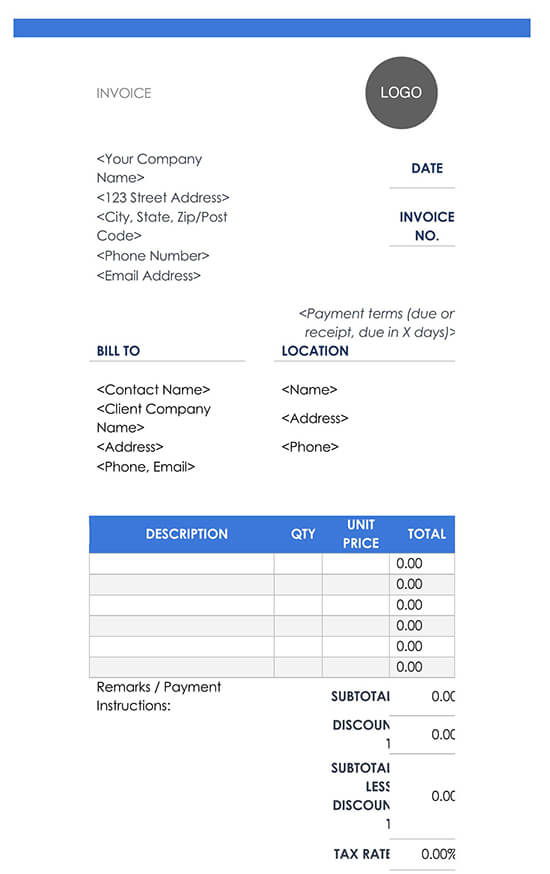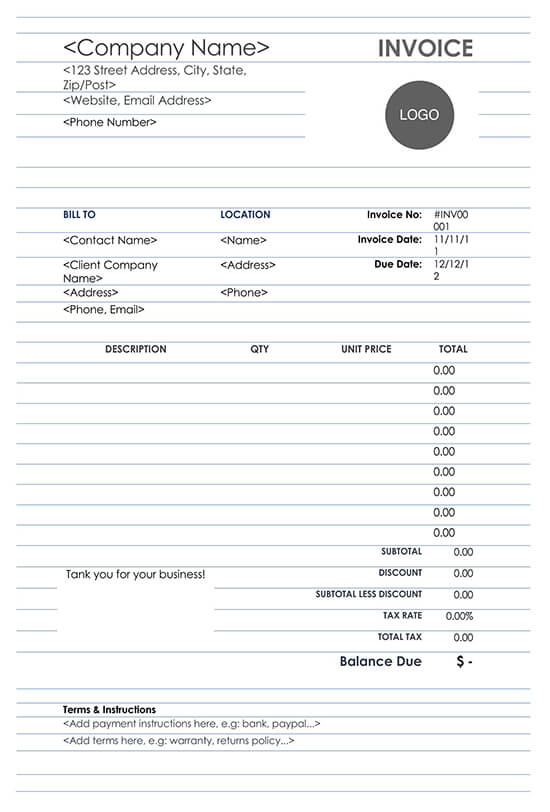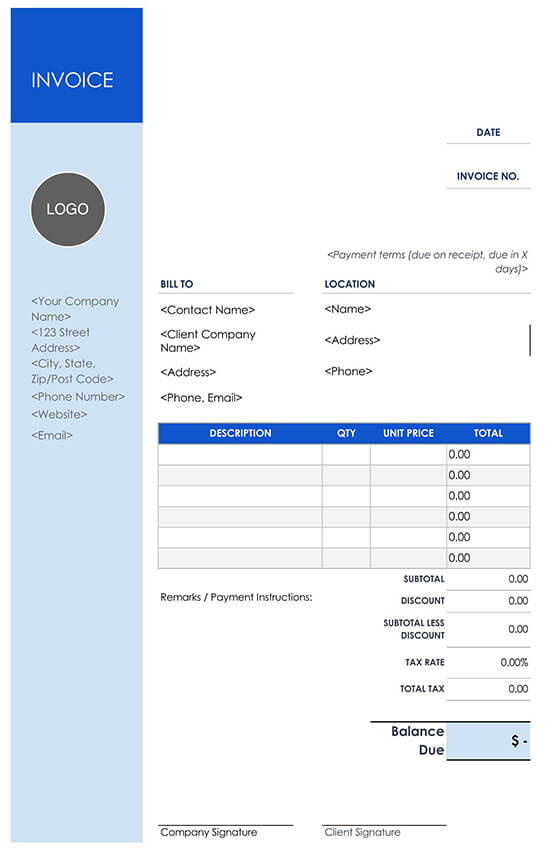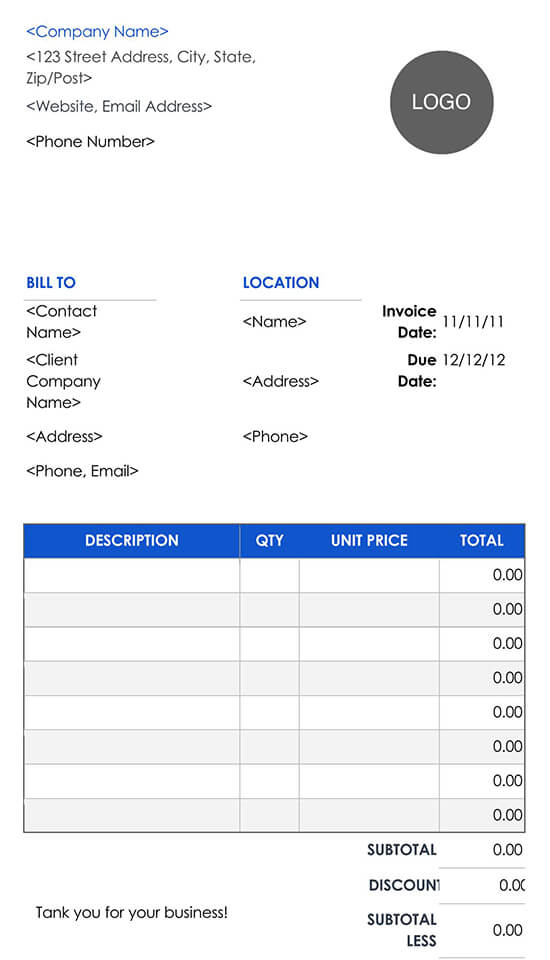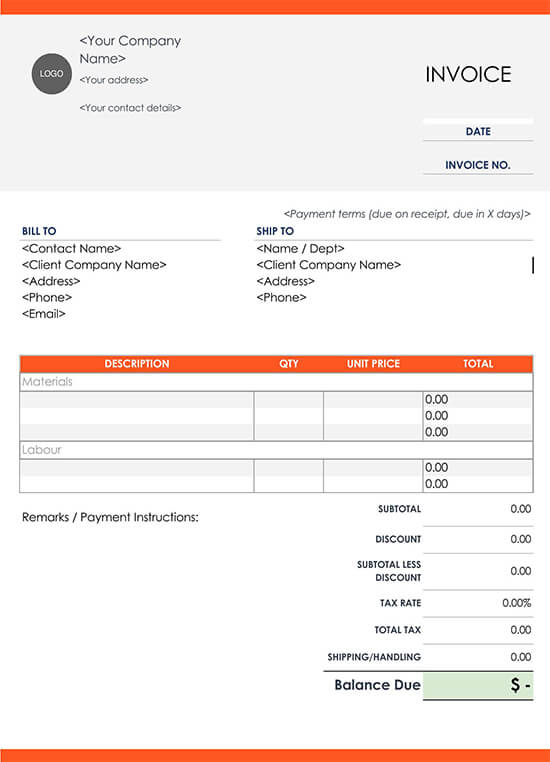A construction invoice is usually used when companies have completed work for their clients and are now ready to get paid.
A construction invoice template, on the other hand, is a ready-to-use document that is just needed to be filled. The main sections in a construction invoice template includes:
- Time put in and work completed, written in the labor section,
- What/quantity of products used written in the material section,
- and, how much is being charged for other services
Since invoices are the last interactions that most businesses have with their clients, the Invoice should be professional and comprehensive to help in leaving a lasting positive impression that will keep the customers coming back or recommending your services to their friends.
What is a Construction Invoice used for?
As a construction supervisor, you may be wondering how to bill your clients and at the same time, keep track of your business finances. Professional and well-organized invoicing is an essential component of running and managing any successful business. Construction managers usually have their hands full with various responsibilities of running the business and ensuring that the clients are happy. To make your work much easier, you can download and use our free ready to use, customizable templates to help you bill more professionally. Here are some of the reasons why you should use a construction invoice:
- organize all your transactions
- record important payment information
- stay on top of payment due dates
- collect necessary information for tax purposes
- make a note of all outstanding debts and debtors
- record all the material purchased, services offered, and their corresponding prices.
- Keep your financial records organized and up-to-date
Elements of a Construction Invoice Template
All construction invoice templates vary depending on the work being performed, the particular transaction, or even based on the type of service and rates that the client may demand. Some of the basic components of a construction invoice template include:
- Your company name
- Customers name
- Work duration
- Invoice number
- Description of the work done
- Payment terms
- Project notes
- Itemized list of materials used, the quantities for each material used, the unit price, and the total for each.
- A breakdown of the labor, costs associated, and hourly rates to be charged
- A line for the total cost of materials
- A line for the total cost of labor
- Applicable taxes
- Payment due date
Based on that outline, you may want to break down the prices so that the client knows how the costs of both materials and labor are divided. Such breakdown may list the total hours worked in completing different aspects of the job. For instance, if you are roughing in the electricals as well as framing up a room, you may want to charge different hourly rates, respectively. Your client wants to know what they are paying for and understand the value for their money, so be detailed as much as possible is a smart move.
When to Send an Invoice
The invoicing window is rather flexible with construction, as the projects typically last a considerable amount of time. From the conception period of the project and the initial meeting, the project will have to be evaluated from time to time, laid out, and scheduled. Often, projects have to be completed in phases, with lengths of time in between.
To make your work much easier, it is important that you match your invoicing with the different project phases. This way, you will make it easy for the clients to pay you immediately the job unfolds, and more materials are needed. For example, if you are renovating several rooms in a home and doing one room at a time, you may bill them for the work and materials as each room is done. Similarly, if the project is larger, such as building an extension to your home, you may divide payments up into monthly installments throughout the project. This option may be ideal for most clients, as most of them usually prefer paying in installments.
Another option you also have is to charge the full amount after the project is completed. Some customers prefer this method as they are guaranteed that you will not leave their project hanging. This option, however, requires that you have more upfront capital from your company and may not be the best option for smaller operations.
The last option you may decide to use is to require partial or full payment before starting the project. This option may be objectionable to most customers; also, you may incur unforeseen costs as the project progresses that may hinder you from completing the project as initially planned.
Types of Construction Invoices
When creating a construction invoice, you want to select the type that fits both your needs and the clients. There are different types of invoices, including:
Standard Invoice: This Invoice is basic and straightforward. It lists how much the customer/client owes you for the construction work you have done.
Recurring Invoice: This Invoice is used to request and accept ongoing payments from clients. A recurring invoice would be best for use in collecting payments for a recurring service.
Prepayment Invoice: This type of Invoice is used to collect a down payment or deposit on your services before completing the project and the collection of the final payment.
Time-Based Invoice: A time-based invoice is used for billing the client for a service that is charged based on the time tracked. An hourly invoice is an excellent example of a time-based invoice.
Credit Invoice: This type of Invoice is used to express a positive balance in case of a refund or rebate added to your client’s account.
Debit Invoice: A debit invoice/debit note is an added balance that a client owes after an adjustment or increase to the total cost. This usually happens when the project requirements change, but the client paid upfront.
Mixed Invoice: A mixed invoice details the credits made to the client’s account and the remaining or final balance.
Free Construction Invoice Templates
We understand that creating a professional and comprehensive invoice can be a struggle for many people, especially for business owners and construction managers, who already have so much to do in a limited amount of time. Therefore, we have designed an easy to use, customizable, and ready-to-print construction invoice templates that include all essential elements just for you. Simply download the template, customize it for your clients, and send it. By using these construction invoice templates, you will be able to get all the essential details and ensure that you get paid the right way.
Invoice like a Pro
You take your time to make sure that your work looks professional-shouldn’t your invoice mirror that? Here are some pro tips for using to keep your construction invoices looking great to make the process effective and efficient.
Be keen on the details: all construction projects entail a lot of different aspects. When drafting your Invoice, it is important that you check and confirm that all the details are correct and that nothing is left out.
Keep it neat and clear: this goes together with detailing your work. Since there are many different parts to a typical construction project, you must lay it down in a way that the client will be able to understand easily.
Endnote
Make sure to create a construction invoice template for each contract you get. Creating a construction invoice by the contract will help you reduce the number of math and information errors in your invoice. Irrespective of how small or huge a project is, it is always a good practice to send construction invoices to your clients immediately after completing the work. This gives both the company and the clients a record of all the work done, thereby making it easier to file taxes and ensure that all the services offered are paid for on time. You should make sure to create a construction invoice template for each contract you get.
